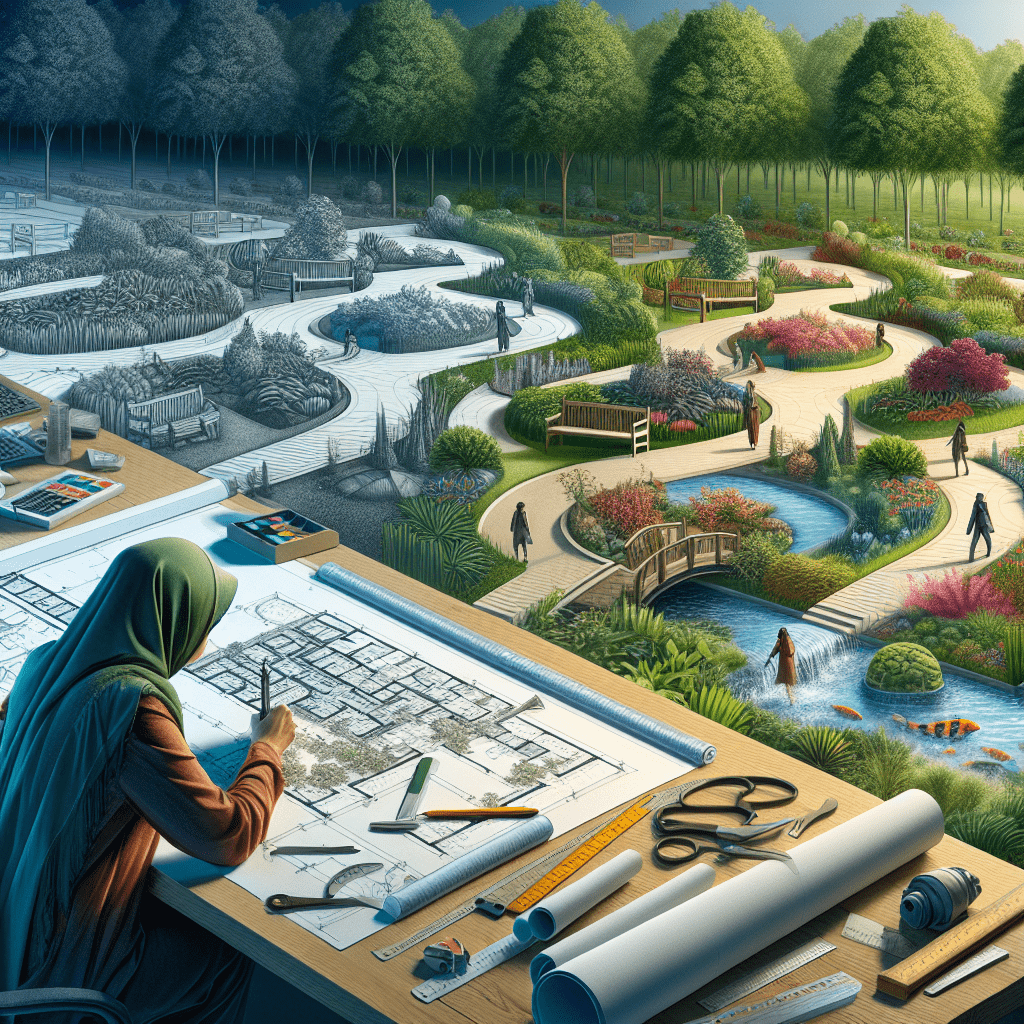Landscape design is the art of arranging and modifying the features of a yard, garden, or outdoor space to create a visually pleasing environment. It involves both the planning and creation of landscapes and typically draws on a variety of disciplines such as architecture, botany, and horticulture. In this article, we will delve into the process of landscape design from concept to creation, exploring the steps involved in bringing a landscape design to life.
The Design Process
The first step in the landscape design process is to develop a concept. This involves identifying the client’s needs and preferences, as well as the site’s conditions and constraints. The designer will work closely with the client to understand their vision for the space and develop a design that meets their requirements.
Once the concept has been established, the designer will move on to the planning stage. This involves creating a detailed plan that outlines the layout of the landscape, including the placement of features such as plants, trees, and hardscape elements. The plan will also include information on materials, colors, and textures to be used in the design.
After the plan has been approved, the designer will begin the implementation phase. This involves the actual construction of the landscape, including planting, hardscaping, and any other necessary work. The designer will oversee the construction process to ensure that the design is implemented correctly and according to plan.
Key Elements of Landscape Design
There are several key elements to consider when designing a landscape. These include:
- Plant selection: Choosing the right plants for the space is essential for creating a cohesive and visually appealing design. Factors to consider include the climate, soil conditions, and maintenance requirements of the plants.
- Hardscape elements: Hardscape elements such as pathways, patios, and walls can add structure and visual interest to a landscape. It is important to carefully select materials and design elements that complement the overall aesthetic of the space.
- Color and texture: Color and texture play a key role in creating a harmonious and dynamic landscape design. By incorporating a variety of colors and textures, designers can create a visually interesting and inviting outdoor space.
Conclusion
Landscape design is a multifaceted process that involves careful planning, design, and implementation. By working closely with clients and considering key elements such as plant selection, hardscape elements, and color and texture, designers can create stunning outdoor spaces that meet the needs and preferences of their clients. From concept to creation, the landscape design process is a collaborative effort that results in beautiful and functional outdoor environments.
FAQs
What is landscape design?
Landscape design is the art of arranging and modifying the features of a yard, garden, or outdoor space to create a visually pleasing environment.
What are the key elements of landscape design?
The key elements of landscape design include plant selection, hardscape elements, color, and texture.
How important is the planning phase in landscape design?
The planning phase is crucial in landscape design as it helps designers outline the layout, materials, and overall vision for the outdoor space.
TIP:
When selecting plants for your landscape design, consider factors such as climate, soil conditions, and maintenance requirements to ensure the longevity and health of your garden.
#Concept #Creation #Exploring #Process #Landscape #Design

